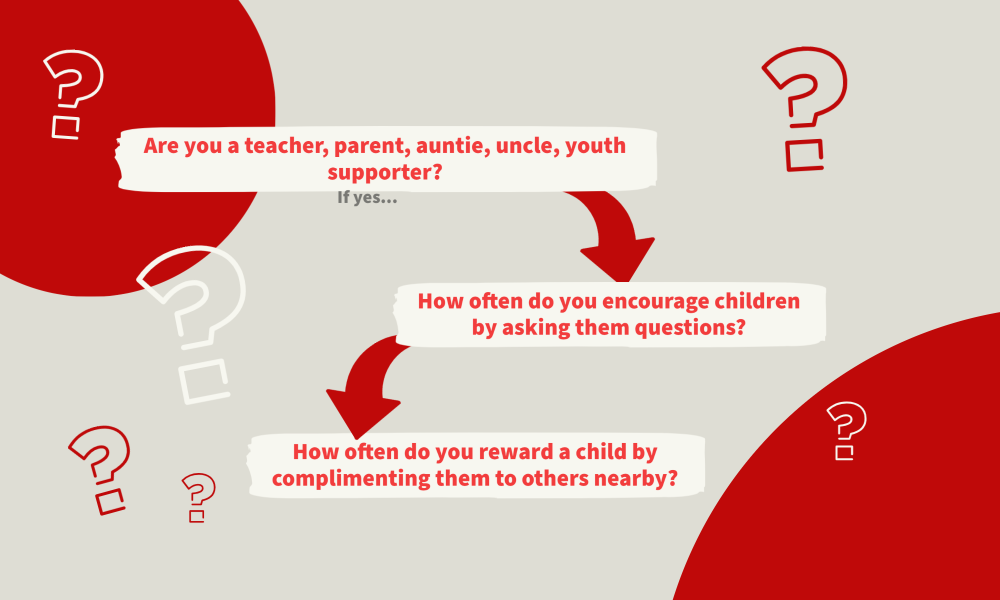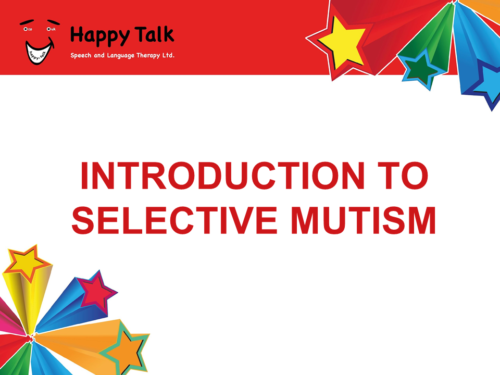As the new marketing intern for Happy Talk Ltd I attended my first Speech and Language Therapy webinar last week about Selective Mutism. I want to share some of my reflections here, starting by asking you this:

Rebecca Blahuta, one of Happy Talk’s specialist speech and language therapists, described how the fight or flight response is triggered in children with Selective Mutism when someone asks them a question, causing them to freeze without choice and not be able to answer. This made me reflect, as I have asked you to above, on how often I ask children questions and the stress this may cause some children, even if they do not have a diagnosis of Selective Mutism.
When I volunteered at a local Girlguiding Brownie group and at a primary school, although none of our children had Selective Mutism, some children did get very nervous when speaking to others and would struggle to answer direct questions. I think some of Rebecca’s tips for helping children with Selective Mutism are good for all children, especially those who are out of their comfort zone or shy:
- Making comments, rather than asking questions, reduces the pressure for children to respond so can help them speak. So, how could I apply this tip to my volunteering? Rather than asking a child about their day, I could tell them about my day and wait to see if they add anything or ask me a question! Conversation is best when doing an activity together so if the child doesn’t respond to a comment it doesn’t make the situation uncomfortable, the child can just continue with the activity.
- The pep talk. It’s natural to try to protect children from feeling embarrassed or confused by their struggles to communicate. Rebecca talked about helping children feel less anxious and isolated by being open and honest with children about their anxieties. Story books are a great informal and fun way to do this, so I have listed some below that were suggested by Rebecca. How could I apply this tip to my volunteering? If children are feeling nervous, I could take away the pressure to communicate by explaining at an appropriate moment they are not expected to speak, are not alone and it is natural to experience anxiety regarding communicating.
- Often children want to join in, but just struggle to verbally, so enable them to participate in other ways! Rebecca explained that Selective Mutism is not related to low language ability, it is anxiety related. So, often children know what they want to say but just can’t get the words out. How could I apply this tip to my volunteering? Provide a range of activities so there are methods for children to join in or communicate without having to speak. These could be tasks such as craft, building or exercise or using toys such as puppets that children can ‘speak through’. Children could be encouraged to make a ‘home diary’ to interact with their teachers without needing to speak too much.
So, what are my final thoughts on Rebecca’s webinar? Armed with my new understanding of the scientific reasons behind Selective Mutism, and Rebecca’s tips, I think we can help all children to engage in conversation, not just those who are shy or struggle to answer direct questions. By finding a balance between asking questions, making comments and waiting, we can teach children how to make conversation.
Next time I ask a child a question, I will now think ‘could commenting rather than questioning have been more appropriate?’
Story books recommended by Rebecca: (hover over them for more information)
The Huge Bag of Worries
(2011)
by Virginia Ironside
Hodder Children’s Books
London (ages 3–9)
What to Do When You Worry Too Much
A Kid’s Guide to Overcoming Anxiety (2006)
by Dawn Heubner
Magination Press
Washington, DC (ages 6–12)




